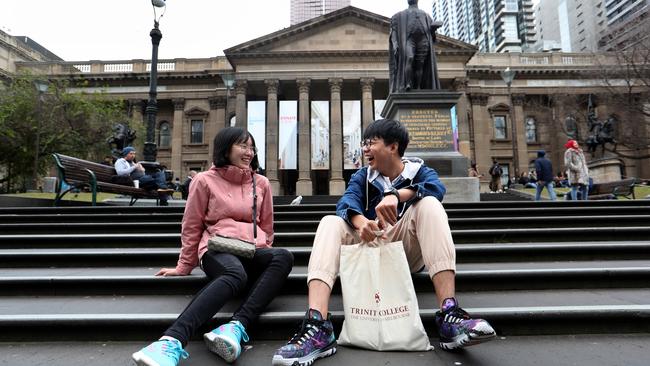The multifaceted realities of living costs for international student

Engaging with international students in my neighbourhood, I’ve observed a departure from the narrative of seeking aid for living expenses and advocating for extended work hours, as commonly portrayed in headlines.
Residing in an inner-city suburb hosting thousands of students from various Sydney universities, I’ve noticed Chinese-speaking students embracing comfortable spending habits, ranging from frequent dining out and takeaways to personal grooming like manicures and hairstyling. The Chinese social media equivalent of Instagram, Little Red Book, showcases them exploring cafes, restaurants, concerts, musicals, and occasionally travelling across Australia during semester breaks.
Livia (a pseudonym), a Chinese student who began her two-year Master of Commerce degree in February, candidly admitted her lack of awareness regarding Sydney’s living costs before departure, as her father managed the finances.
“I haven’t truly felt the pressure of living expenses,” she said, revealing her father allocated an “extra” amount to ensure she could focus on studies without financial distress. She added, “transport is expensive … perhaps because I’ve been using Uber too frequently lately …”
Livia’s university provides an annual living expense guide of $21,041 per person – an often-cited figure from the Department of Home Affairs. Using Study Australia’s cost of living calculator, the estimated cost for living in a shared house in a Sydney suburb with essential expenses only totals around $23,660.
However, these figures primarily account for Livia’s yearly rent, amounting to $450 per week or $23,400 a year – lower than her father’s initial budget amid Sydney’s rental crisis at the year’s start.
Recognising diverse student lifestyles, numerous universities acknowledge costs differing significantly from the department’s guidelines. Western Sydney University suggests a budget of approximately $25,900 per adult per year, while the University of Technology, Sydney, proposes a range between A$24,492 and A$32,292 for sufficient self-support throughout students’ academic journeys.
Chinese students and parents are often told substantially higher estimated costs. Study consultants and online articles concur on an average yearly expenditure of $40,000 to $50,000 for living expenses, plus around $50,000 for tuition fees.
China’s “low-risk” student visa classification eliminates the need for financial proof, unless explicitly requested by the department. A Melbourne consultant shared that her Chinese clients have been exempt from furnishing bank deposits or income proof since 2016.
“Most Group of Eight university students have sufficient family support and hardly work for money,” the consultant asserted.
An eavesdropping Chinese-speaking Uber driver interjected the conversation, “Struggling with living costs? Not the case for Chinese students nowadays.”
Livia has casually engaged in both paid and unpaid roles to acquire relevant field experience, noting that most of her peers choose not to work. Extended work hours, a concern for some international students, are largely irrelevant to Chinese students who are focused on completing their degrees and gaining overseas experience before returning home.
Overseas education loans are common among international students, leading many to part-time jobs for early loan repayment. However, Chinese students pursuing university-level studies in Australia often avoid such arrangements, according to Chinese visa consultants.
Nevertheless, this doesn’t diminish living cost significance. Despite Sydney and Melbourne’s high position in the QS 2024 Best Student Cities rankings (7th and 4th respectively), a closer look at affordability metrics places them at 137th and 131st out of 160 cities surveyed.
International students, especially those with study loans, should have access to an updated guide on living costs before their departure. It is necessary to consider allowing flexible work hours to help them manage the escalating expenses in metropolitan areas. Moreover, ensuring protection against exploitation and providing comprehensive workplace safety education are crucial for those who work during their study period.
While numerous international students contend with the challenges of living costs, the most significant hurdle for Chinese students is their English proficiency. This challenge results in academic frustration, mental wellbeing impacts, and limitations on job prospects. “We even converse in Chinese during tutorials, as both students and tutors are Chinese speakers!” Livia said, emphasising a concern present in certain universities.
As we diversify the student market, our international education sector must recognise diverse needs of students from varied backgrounds. This entails tailored support to address their distinctive concerns and challenges.
Heidi Han is a former Mandarin editor of The Australian.



Media reports often spotlight the challenges international students face due to high living costs in Sydney and Melbourne. However, some of these reports only focus on the most vulnerable part in the spectrum of international student experiences.